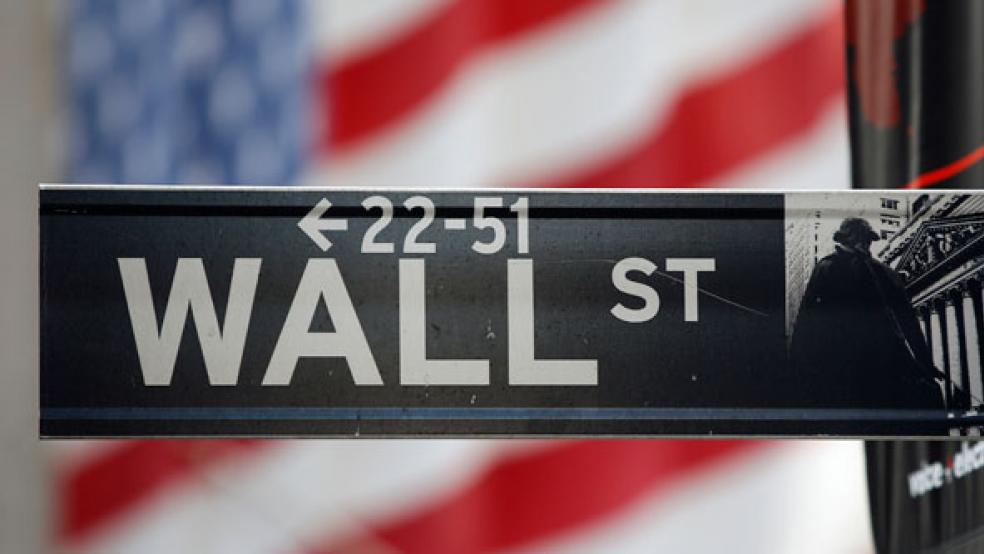Yesterday, the International Monetary Fund, in its annual report on the U.S. economy, instructed the Federal Reserve to delay any interest rate hikes until next year, mainly because of fears of a slowing economy and the lack of need to tighten while inflation remains low. But there was another warning lurking inside that report, about potential financial instability.
“Assets in the nonbank sector have grown rapidly, and there are signs of stretched valuations across a range of U.S. asset markets,” the report concludes. Translated from IMF-ese, that means that money has migrated to unregulated spaces with unknown risks, with what could be bubble prices attached to them. If those risks manifest, and a fire sale ensues, regulators could be blindsided and large firms — particularly those in the insurance industry, the IMF cautions — could find themselves insolvent.
Related: IMF’s Surprising Message to Yellen on Interest Rates
To remedy this, the IMF calls for better coordination between agencies, stronger data collection and increased regulation on insurance firms, non-bank financial services providers and money market funds. But it also calls for something quite novel, which the government should have done the moment it dug out of the financial crisis: what they term “simplifying the institutional structure.”
The truth is that, regardless of what you think of the Dodd-Frank reform law, the financial regulatory system we have is incredibly unintelligently designed. Overlapping responsibilities, an alphabet soup of agencies zealously guarding their jurisdictions and a lack of a clear hierarchy has created such a morass that major problems can easily fall through the gaps. Think of the worst organizational chart you can imagine — like the one for Initech, the fictional company from Office Space, where Peter Gibbons has eight different bosses — and make it a little worse, and that’s what our financial regulatory apparatus looks like. Nobody would start from scratch and design oversight this way.
Currently, regulatory agencies are segregated by business lines, even though we saw in the crisis that the differences between “insurance,” “banking,” “commodity trading” and any of several dozen other sectors are thin at best. Wall Street firms were able to shop for the most lenient regulator and even play them off one another to weaken oversight. Rulemaking is a mess, involving multiple agencies and often involving turf wars more than the public interest. Furthermore, it’s hard to oversee a new financial innovation that doesn’t precisely fit into any one category.
Related: Don't Fall for This Big Bank Scare Tactic
You see a hint of this in Elizabeth Warren’s broadside against Mary Jo White, chair of the Securities and Exchange Commission (SEC). Warren has many problems with White’s stewardship, but the biggest stem from the fact that White has a background as a litigator and not a regulator. The SEC both protects investors through enforcement of the securities laws and writes new rules and guidelines, so it’s impossible for anyone to have the proper profile to run a hybrid agency. That’s especially true when White’s husband works as a Wall Street lawyer, forcing her to recuse herself from over four dozen investigations. So the SEC gets an inexperienced regulator, and an absentee enforcer.
The good news is that this doesn’t happen to be terribly difficult to fix. We can unwind the different agencies that have built up over the years and simplify the regulatory system. We even have a blueprint, in the form of a little-known paper released in April by former Federal Reserve Chair Paul Volcker and his new organization, the bipartisan Volcker Alliance.
The paper coherently re-designs the system to fit with trends in modern finance, much like Roosevelt did with the original SEC and FDIC during the Depression. “The main focus of the Dodd-Frank Act was to strengthen and expand the scope of regulation, not to rationalize the regulatory framework,” the report notes.
Related: The GOP Wants a Watchdog for Obamacare
This process of rationalization has some key features:
• The Financial Stability Oversight Council (FSOC) would get new independence as a super-regulator with broad oversight authority of the entire system. The Office of Financial Research would similarly get shifted out of the Treasury Department and have its own data collection mandate.
• A new Prudential Supervisory Agency (PSA) would be responsible for the supervisory authority now stretched across five different federal agencies, examining banks, systemically important financial institutions (SIFIs), investment dealers, money market funds and more.
• The Federal Reserve would do rulemaking, but the PSA could propose regulations for them to approve. It would also have some oversight authority in concert with the FSOC.
• The Federal Deposit Insurance Commission would focus on deposit insurance and orderly liquidation of failed firms and get out of the primary supervision business.
• The Office of the Comptroller of the Currency, which currently regulates nationally chartered banks, would be eliminated.
• The SEC and the Commodity Futures Trading Commission would be combined into one regulator with responsibility for investor protection and capital market conduct.
This not only streamlines the agencies to focus on their core strengths, but prevents overlaps that pull regulators away from actual monitoring and into conflict with one another. The monitors do the monitoring, the examiners to the examining, the rule-writers do the rule-writing and the investor protectors do the protecting. Everyone stays in their lane and knows their mission. Nobody has to worry about whether their supervisory role conflicts with their oversight role, or whether they should focus on rule-writing or enforcement. It’s a rare plan for governmental action that relies on common sense.
Related: The Best Bank in Every Region Across America
It’s worth noting that the one area of the system the Volcker Alliance chooses not to touch is the one that Dodd-Frank actually fixed: consumer protection. Dodd-Frank created the Consumer Financial Protection Bureau (CFPB) by pulling consumer protection authority out of a mélange of different agencies and into one coherent office. And that has worked almost exactly as planned, with a more focused and sharper agency recovering billions of dollars for consumers. It’s time to extend this to the rest of the regulatory perimeter.
Of course, imagining this structure is the easy part. Agency veterans will cling to their authority and resist efforts to take it away. But Dodd-Frank did manage to create CFPB and close down the unnecessary and weak Office of Thrift Supervision. There’s a blueprint for rebuilding the regulatory system the way you would if you were starting from scratch. Unfortunately, the risk-averse Obama administration shut down any talk of a full overhaul before getting started.
Just because the system makes internal sense doesn’t necessarily mean it will be effective. Regulatory backbone still matters. And the Volcker Alliance vision still grants perhaps too much power to the Federal Reserve, which does have competing mandates and a career staff that’s too willing to undermine regulatory goals. But at least with a well-defined apparatus, we could more easily spot the shrinking violets and the sellouts, rather than chalking up regulatory failures to a broken system.
Democrats and Republicans on the Senate Banking Committee are offering competing financial reform bills, but they merely tweak the system, raising the asset threshold for SIFIs, relieving some reporting requirements for community banks and increasing scrutiny on the Federal Reserve. These bills again layer onto an absurd system that was ineffective in stopping the 2008 crisis. It’s not just that we need more straightforward rules, but a better system to carry them out.
Top Reads from The Fiscal Times:






